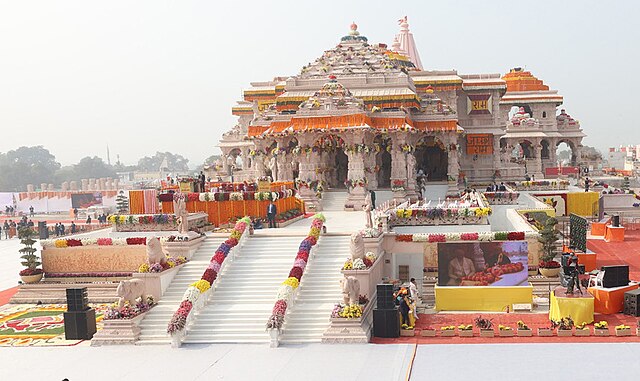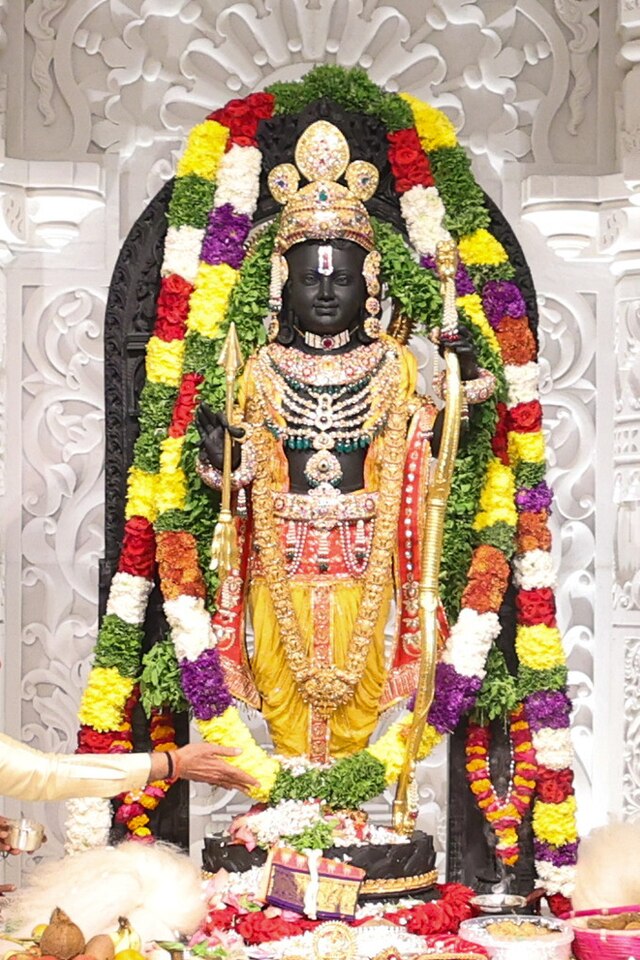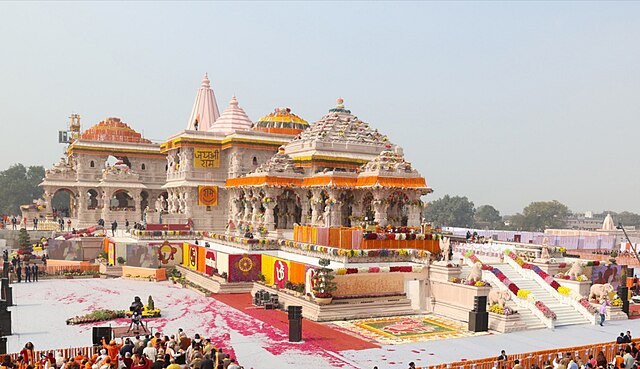Have you ever gazed upon a photograph that instantly transported you to a place of divine tranquility? That’s exactly what happens when you look at beautifully captured Ram Mandir photos. The magnificent temple in Ayodhya has become one of India’s most photographed religious monuments, and it’s easy to understand why. Every angle reveals architectural poetry, every shadow tells a story, and every golden ray of sunlight creates magic that photographers dream of capturing.
Whether you’re a professional photographer, an amateur enthusiast, or simply someone who appreciates beautiful temple imagery, understanding the art of Ram Mandir photography opens up a world of spiritual and artistic possibilities. Let’s embark on this visual journey together and discover what makes these photographs so captivating.
The Visual Splendor of Ram Mandir
The Ram Mandir stands as a testament to both ancient architectural wisdom and modern construction excellence. When you look at photographs of this magnificent structure, you’re witnessing centuries of cultural heritage crystallized in stone and gold.
What makes Ram Mandir photos so compelling? It’s the perfect blend of grandeur and intimacy, monumentality and delicate detail. The temple doesn’t just sit in the landscape – it transforms it, creating a visual symphony that photographers can’t resist capturing.
Architectural Photography Highlights

The temple’s Nagara-style architecture provides endless opportunities for stunning photographs. Those towering spires, or shikharas, create dramatic silhouettes against the sky, while the intricate carvings tell stories that unfold differently in each photograph.
Every pillar, every arch, every decorative element has been crafted with such precision that photographers often find themselves overwhelmed by the sheer number of compelling compositions available. It’s like having a thousand different photo opportunities within a single frame – you just need to know where to look.
The interplay of light and shadow across the temple’s surfaces creates natural drama that changes throughout the day. Morning light brings out the warm golden tones of the sandstone, while evening illumination transforms the temple into a glowing beacon of spirituality.
Golden Hour Magic at the Temple
Speaking of light, let’s talk about the golden hour – that magical time just after sunrise and before sunset when photographers consider themselves blessed. At Ram Mandir, this phenomenon reaches almost mythical proportions.
During these precious moments, the entire temple seems to glow from within. The golden sandstone literally comes alive, creating photographs that capture not just the physical beauty of the structure, but its spiritual essence as well. These are the moments when amateur photographers create masterpieces and professionals capture award-winning shots.
Types of Ram Mandir Photos
Not all Ram Mandir photos are created equal. Different types of photography serve different purposes, and understanding these categories can help you appreciate the full spectrum of visual documentation surrounding this sacred space.
Exterior Architecture Shots
These are perhaps the most common and immediately recognizable Ram Mandir photos. They showcase the temple’s impressive exterior, capturing its full glory against the sky. Wide-angle shots reveal the temple’s relationship with its surroundings, while telephoto lenses isolate specific architectural elements for detailed study.
The key to great exterior shots lies in finding the right perspective. Some photographers prefer ground-level shots that emphasize the temple’s towering height, while others seek elevated positions that showcase the temple’s layout and proportion. Each approach tells a different story about this magnificent structure.
Interior Sacred Spaces
Interior photography of Ram Mandir presents unique challenges and opportunities. The sacred spaces within the temple offer intimate glimpses into the heart of devotion, where intricate details and spiritual symbolism come together in perfect harmony.
These photographs require different techniques – dealing with lower light conditions, respecting the sanctity of the space, and capturing the emotional resonance of the interior environment. The result, however, can be profoundly moving images that connect viewers to the temple’s spiritual purpose.
Construction Journey Documentation
One of the most fascinating categories of Ram Mandir photos documents the incredible construction journey. These images tell the story of transformation – from foundation laying to the final architectural flourishes.
Before and After Comparisons
Timeline photography of the construction process creates powerful before-and-after narratives. These images document not just physical transformation, but represent the culmination of decades of hope, dedication, and collective effort.
Comparing early construction photos with completed temple images reveals the magnitude of this architectural achievement. It’s like watching a dream materialize in stone, one photograph at a time.
Worker and Craftsman Portraits
Some of the most moving Ram Mandir photos focus on the human element – the skilled craftsmen, dedicated workers, and passionate artisans who brought this vision to life. These portraits capture the human spirit behind the divine architecture.
These images remind us that magnificent structures don’t build themselves. They’re the result of countless hours of human dedication, skill, and devotion. Each face tells a story of contribution to something greater than oneself.
Best Times to Photograph Ram Mandir

Timing in photography isn’t just important – it’s everything. When it comes to Ram Mandir photos, understanding the rhythm of light throughout the day can mean the difference between a good photograph and an extraordinary one.
Sunrise Photography Opportunities
Early morning at Ram Mandir offers photographers something truly special. As the sun rises, it gradually illuminates the temple’s eastern facade, creating a natural spotlight effect that’s impossible to replicate artificially.
The soft, warm light of sunrise brings out the texture in the stone carvings and creates gentle shadows that add depth and dimension to your photographs. Plus, you’ll often have the temple to yourself during these early hours, allowing for unobstructed shots without crowds.
Evening Light and Illumination
If sunrise photography captures the temple’s serene awakening, evening photography reveals its majestic presence. As natural daylight fades, the temple’s architectural lighting system creates a completely different visual experience.
The artificial illumination highlights specific architectural features while creating dramatic contrasts between light and shadow. Evening photography often produces some of the most striking Ram Mandir photos, with the illuminated temple standing like a beacon against the darkening sky.
Photography Equipment for Temple Shots

You don’t need the most expensive equipment to capture beautiful Ram Mandir photos, but understanding your tools can significantly improve your results.
Camera Settings for Architecture
Architectural photography has its own set of technical requirements. For Ram Mandir photos, you’ll typically want to use smaller apertures (higher f-numbers) to ensure sharp focus throughout the frame. This is especially important when capturing the intricate details of the temple’s carvings and decorative elements.
Shooting in RAW format gives you maximum flexibility in post-processing, allowing you to adjust exposure, contrast, and color balance to bring out the best in your temple photographs. Don’t forget about using a tripod for sharp images, especially in lower light conditions.
Essential Lenses and Accessories
Wide-angle lenses are invaluable for capturing the full majesty of Ram Mandir, allowing you to include the entire structure in your frame even from relatively close distances. However, don’t overlook the importance of telephoto lenses for isolating specific architectural details.
A polarizing filter can be your best friend when photographing the temple, reducing reflections and enhancing the contrast between the golden stone and blue sky. This simple accessory can transform an ordinary photograph into something extraordinary.
Popular Ram Mandir Photo Locations
Knowing where to position yourself can make all the difference in your Ram Mandir photography. Different vantage points reveal different aspects of the temple’s character and beauty.
Main Entrance Perspectives
The main entrance provides several classic photographic opportunities. Straight-on shots capture the temple’s symmetrical beauty and formal grandeur, while angled perspectives add dynamic energy to your compositions.
Don’t forget to look for interesting foreground elements that can frame your temple shots. Decorative gates, landscaping features, or architectural details can add depth and context to your Ram Mandir photos.
Aerial and Drone Photography
Drone photography has revolutionized how we see and photograph architectural marvels like Ram Mandir. Aerial perspectives reveal the temple’s relationship to its surroundings and showcase architectural details that are invisible from ground level.
Legal Considerations for Drone Use
Before you launch that drone, remember that religious sites often have specific regulations regarding aerial photography. Always check local rules and obtain necessary permissions. Respect for the sacred nature of the location should always take precedence over getting the perfect shot.
Social Media and Ram Mandir Photos

In today’s digital age, Ram Mandir photos have found a natural home on social media platforms, where they inspire, educate, and connect people around the world.
Instagram-Worthy Shots
Instagram has become a showcase for stunning temple photography. The platform’s visual nature makes it perfect for sharing the beauty of Ram Mandir with a global audience. Successful Instagram posts often combine striking visuals with meaningful captions that provide context and inspiration.
The key to Instagram success with Ram Mandir photos lies in consistency, quality, and authentic storytelling. Don’t just post pretty pictures – share the stories, emotions, and experiences behind your photographs.
Strategic use of hashtags can significantly increase the reach of your Ram Mandir photos on social media. Popular tags like #RamMandir, #Ayodhya, #IndianArchitecture, and #SacredSpaces help connect your content with interested audiences.
Engagement goes beyond just posting photos. Respond to comments, share others’ content, and participate in conversations about temple architecture and spirituality. Building a community around your photography creates lasting connections.
Historical Ram Mandir Photos
The photographic documentation of Ram Mandir extends far beyond just the completed structure. Historical photographs tell the complete story of this remarkable temple.
Construction Phase Documentation
Construction photography of Ram Mandir provides invaluable historical documentation of one of India’s most significant architectural projects. These images capture the evolution of the temple from foundation to completion, preserving this transformation for future generations.
Each phase of construction brought new photographic opportunities and challenges. From the initial groundbreaking to the placement of the final decorative elements, photographers documented every significant milestone in the temple’s creation.
Ceremonial Event Photography
Special ceremonies and events at Ram Mandir have generated some of the most emotionally powerful photographs associated with the temple. These images capture not just the physical space, but the human emotions and spiritual significance that make this temple so special.
Event photography requires different skills than architectural photography – the ability to capture fleeting moments, genuine emotions, and the energy of collective celebration.
Photo Editing Tips for Temple Images

Even the best Ram Mandir photos can benefit from thoughtful post-processing. The goal isn’t to create artificial beauty, but to enhance the natural magnificence that already exists.
Color Enhancement Techniques
The golden tones of Ram Mandir’s sandstone construction provide beautiful natural colors that can be enhanced through careful editing. Adjusting warmth and vibrance can bring out the richness of these tones without making them appear artificial.
Pay attention to the sky as well – enhancing the contrast between the golden temple and blue sky can create more dramatic and visually appealing photographs.
Architectural Detail Enhancement
Post-processing can help bring out the incredible detail in Ram Mandir’s carvings and decorative elements. Careful sharpening and clarity adjustments can make these details more visible without creating an over-processed appearance.
Shadow and highlight adjustments can reveal details that might be lost in the original photograph, helping viewers appreciate the full complexity of the temple’s design.
Respectful Photography Guidelines
Photography at religious sites requires special consideration and respect. Ram Mandir is not just an architectural marvel – it’s a sacred space that holds deep spiritual significance for millions of people.
Always be mindful of worshippers and religious activities when taking photographs. Your pursuit of the perfect shot should never interfere with someone’s spiritual experience or religious observance.
Follow all posted guidelines and restrictions. Some areas may be off-limits to photography, and flash photography might be prohibited in certain spaces. When in doubt, ask for permission and always err on the side of respect.
Where to Find Quality Ram Mandir Photos
If you’re looking for high-quality Ram Mandir photos for educational, research, or appreciation purposes, several sources offer excellent collections.
Official Sources and Archives
Official temple websites and government cultural departments often maintain comprehensive photo archives documenting various aspects of Ram Mandir. These sources typically offer high-resolution images suitable for educational or research purposes.
Many of these official collections include historical construction photos, ceremonial event documentation, and professional architectural photography that captures the temple’s finest details.
Professional Photography Collections
Professional photographers who specialize in architectural and religious photography have created stunning collections of Ram Mandir images. These photographers bring technical expertise and artistic vision to their temple documentation.
Many professional collections are available through stock photography websites, gallery exhibitions, and photography books dedicated to Indian temple architecture.
Conclusion
Ram Mandir photos represent far more than simple architectural documentation – they’re windows into India’s rich cultural heritage, spiritual traditions, and artistic excellence. Whether you’re viewing these images for inspiration, education, or pure aesthetic pleasure, each photograph tells part of a larger story about faith, dedication, and human achievement.
The beauty of Ram Mandir photography lies in its ability to capture both the monumental and the intimate, the ancient and the contemporary. Every photograph is a testament to the vision that created this magnificent temple and the skill of those who documented its creation and completion.
As you explore the world of Ram Mandir photos, remember that you’re not just looking at images of stone and gold – you’re witnessing the materialization of centuries of devotion, the culmination of architectural mastery, and the beginning of a new chapter in one of the world’s most sacred sites. These photographs preserve not just visual beauty, but the very essence of human aspiration reaching toward the divine.
Frequently Asked Questions
1. What are the best camera settings for photographing Ram Mandir?
For optimal Ram Mandir photos, use aperture values between f/8-f/11 for sharp architectural details, shoot in RAW format for maximum editing flexibility, and use a tripod for stability. ISO should be kept as low as possible while maintaining proper exposure, typically between 100-400 during daylight hours.
2. Are there restrictions on photography inside Ram Mandir?
Yes, photography restrictions may apply in certain sacred areas within the temple. Flash photography is often prohibited, and some interior spaces may have complete photography bans. Always check with temple authorities and follow posted guidelines to ensure respectful documentation of this sacred space.
3. What time of day produces the most stunning Ram Mandir photos?
The golden hours just after sunrise (6:30-8:00 AM) and before sunset (5:30-7:00 PM) typically produce the most visually striking Ram Mandir photos. During these times, the warm light enhances the golden sandstone and creates beautiful shadows that add depth and drama to architectural photography.
4. Can I legally use drone photography at Ram Mandir?
Drone photography at religious sites requires special permissions and must comply with local aviation regulations. Contact temple authorities and check with local aviation authorities before attempting aerial photography. Many religious sites have specific restrictions on drone use for security and sanctity reasons.
5. Where can I find high-resolution Ram Mandir photos for educational purposes?
High-quality Ram Mandir photos for educational use can be found through official temple websites, government cultural archives, and professional photography collections. Many universities and cultural institutions also maintain digital archives of Indian temple architecture that include comprehensive Ram Mandir documentation.

